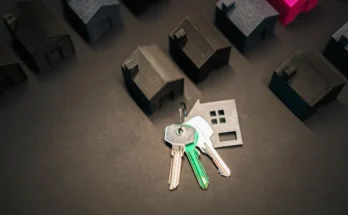Real estate has always been more than just bricks and mortar. It is a reflection of society’s heartbeat—shaped by economy, politics, innovation, and human aspiration. From towering city skylines to sprawling suburban developments, the property market reflects both our greatest ambitions and our deepest insecurities.
Over the years, real estate has proven itself to be both an incredible wealth-building tool and a risky terrain filled with financial landmines. The journey of real estate—marked by both meteoric rises and dramatic downturns—offers valuable lessons for investors, homeowners, and anyone looking to understand the complex world of property.
The Rise and Fall of Real Estate:
Historically, real estate has enjoyed cycles of exponential growth. During economic booms, demand for housing skyrockets. Low interest rates, favorable government policies, and rising incomes often contribute to property surges. Cities expand outward, construction accelerates, and property values climb to staggering heights. The early 2000s, for example, saw one of the most notable housing booms in history, driven by subprime lending and speculative investment. Many people viewed property not just as shelter, but as a fast track to wealth. It was during these times that house flipping, short-term rentals, and speculative buying became cultural phenomena.
However, where there is boom, there often follows a bust. The 2008 global financial crisis laid bare the vulnerabilities of unchecked real estate growth. Triggered largely by the housing bubble in the United States, the crash sent shockwaves through global economies. Property values plummeted, millions lost homes, and the term “foreclosure” became all too common. This painful period reminded the world that real estate, despite its tangible nature, is not immune to volatility. The aftermath reshaped lending practices, consumer behavior, and investment strategies for the next decade.
Understanding the Modern Market:
-
Recovery and Reinvention
Since the 2008 crash, real estate has undergone significant transformation. New regulations, increased transparency, and cautious lending helped the market slowly recover. Urban areas began to flourish again, and technologies like online listings, 3D tours, and real estate fintech made property transactions more accessible.
The COVID-19 pandemic brought yet another unexpected twist. Urban exodus, remote work, and historically low interest rates shifted demand toward suburban and rural properties. In some regions, housing prices soared once again—not driven by speculation, but by lifestyle re-evaluation.
-
Current Trends Shaping Real Estate
Today’s market is a complex mix of old and new. Sustainability is influencing building design. Millennials and Gen Z are entering the housing market with different priorities—favoring flexibility, location, and lifestyle over square footage. Meanwhile, commercial real estate is being reinvented as remote work reduces demand for traditional office space.
Real estate is no longer just about “location, location, location.” It’s about adaptability, timing, and understanding the broader socio-economic canvas.
Investing in Real Estate:
-
First, Know Your Why
Before diving into real estate investment, it’s crucial to understand your goals. Are you looking for long-term rental income? Capital appreciation? A quick flip? Perhaps a vacation property that doubles as a short-term rental?
Each investment type comes with its own risks, rewards, and timelines. Your personal finances, risk tolerance, and life stage should all inform the path you choose.
-
The Many Faces of Real Estate Investment
Real estate investing isn’t one-size-fits-all. Some choose to invest in residential rental properties—single-family homes or multi-unit buildings that provide steady monthly income. Others might lean into commercial real estate, which includes retail spaces, office buildings, and warehouses.
Then there’s REITs (Real Estate Investment Trusts), which allow individuals to invest in real estate portfolios without owning physical property. It’s real estate for the stock-market-savvy investor—a blend of liquidity and real asset exposure.
Flipping properties, while glamorous on TV, requires careful market research, renovation know-how, and solid budget management. The profit potential is high, but so is the risk if timelines or budgets spiral out of control.
-
Location Still Matters
While “location” remains a cornerstone of real estate wisdom, timing has become equally important. Market cycles dictate when to buy, hold, or sell. Savvy investors study trends, monitor interest rates, and keep a close eye on local supply and demand.
Buying in a hot market might mean paying a premium, while waiting for a correction could yield better long-term returns. However, waiting too long could also mean missing out entirely. It’s a balancing act that requires both patience and decisiveness.
How to Succeed in Real Estate Today?
-
Build a Strong Foundation of Knowledge
In real estate, information is power. Successful investors and homeowners spend time learning about property values, local laws, tax implications, and financing options. They understand the importance of due diligence—whether it’s reviewing property records, getting inspections, or researching neighborhood trends.
Knowledgeable buyers don’t just follow the market—they anticipate it. And when surprises come, they’re better equipped to adapt.
-
Assemble Your Team
Even solo investors need a team. A good real estate agent can provide insights that aren’t available online. A mortgage broker can help you find the best financing options. A lawyer can ensure contracts are airtight. And a contractor you trust? Priceless, especially for renovation or maintenance work.
Your success in real estate depends not just on what you know, but who you know—and who you trust.
-
Think Long-Term, But Stay Agile
Real estate is often a marathon, not a sprint. It’s about building wealth over time, through strategic acquisitions and smart management. But staying agile is also key. Markets change, laws evolve, and personal circumstances shift.
Being prepared to pivot—whether by selling, refinancing, or repurposing a property—can be the difference between profit and loss.
The Emotional Side of Real Estate:
-
Home Is More Than an Investment
While the financial side of real estate often dominates conversations, we can’t ignore its emotional value. For most people, buying a home is the biggest purchase of their life—and it represents stability, pride, and personal achievement.
Whether you’re buying your first home, investing in your tenth rental property, or just dreaming about beachfront living, real estate ties closely to identity, dreams, and family legacy.
-
Real Estate as a Legacy
Real estate is one of the few assets that can be passed down through generations. A well-managed property portfolio can provide income and security for your children and grandchildren. It’s not just about today’s value—it’s about the foundation you’re building for tomorrow.
The Future of Real Estate:
Looking forward, the future of real estate is both exciting and uncertain. Technological innovation, climate change, shifting demographics, and evolving lifestyles will all play a role in shaping the next chapter.
Smart homes, green buildings, digital transactions, and even virtual real estate (think metaverse) are already making waves. But one thing remains constant: people will always need places to live, work, and gather.
The key to thriving in real estate—whether as a buyer, investor, or developer—is to stay curious, stay informed, and always be ready to adapt.
Conclusion:
Real estate is not just a financial pursuit—it’s a deeply human one. It reflects who we are, how we live, and what we aspire to become. With the right knowledge, mindset, and strategy, anyone can navigate the rollercoaster of real estate and come out stronger, wealthier, and wiser on the other side.




